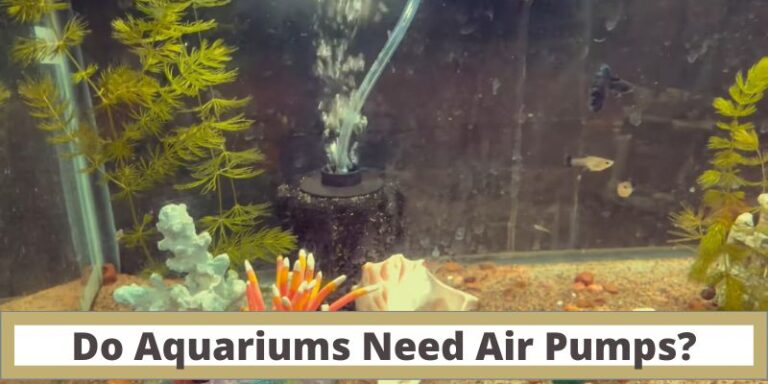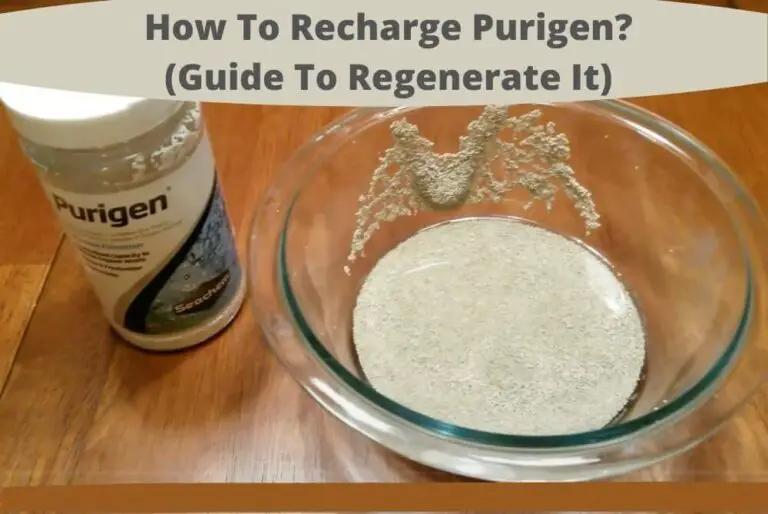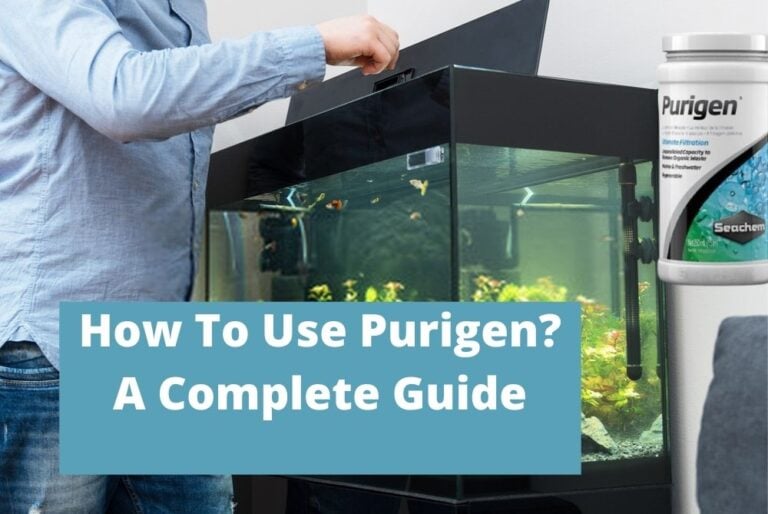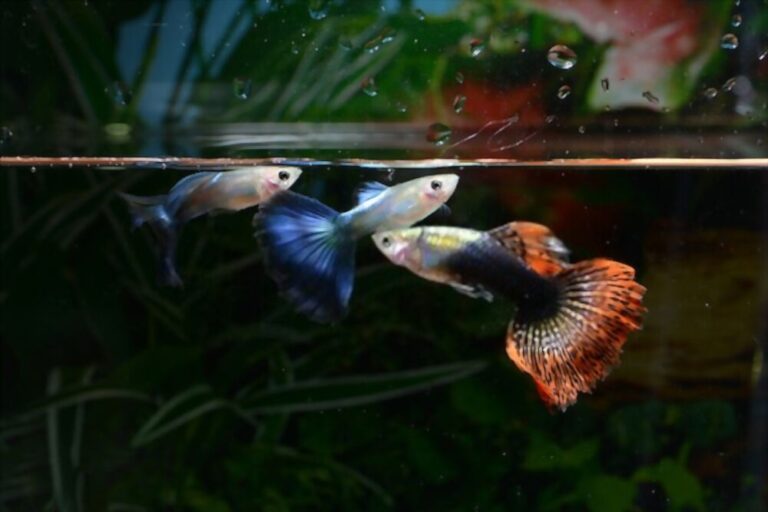Pufferfish Tank Guide: Size, Tank Mates, Conditions, & Requirements
It is fascinating to keep Pufferfish in the aquarium because of their beautiful coloration and watch their aggressive predatory nature.
But it costs you a lot of hard work, precautions, and maintenance for the Pufferfish tank and providing them with the best possible environment to make them live long in captivity. They are predators and are so hard to keep in a community tank.
They are incredibly territorial and should be kept alone in large size tanks with decorations, artificial or live plants, and a substratum of sand and colorful pebbles. Puffers are predatory fish. They can be an ambush or stealth predators.
Tank Size for Your Puffer
While looking for the perfect tank size for your puffer, it should be kept in mind that puffers are territorial predators, and a small or even medium-sized tank is not enough for this hostile territorial fish to be at ease and happy.
They range in size from just 1-inch dwarf puffers to 2 feet long giant freshwater puffers. Hideouts, crevices, or caves are essential parts of an aquarium, especially when your fish is an ambush predator.
All this stuff is possible only when you have a satisfying-sized tank with plenty of crevices and a large space in which your puffer can hide and explore around.
They range in size from just 1-inch dwarf puffers to 2 feet long giant freshwater puffers, So, the tank size can only be determined when you know what puffer you are going to have.
The ideal tank size for a small one inched pea puffer or Malabar puffer endemic to Kerala and Karnataka regions of India is 3 gallons.
The Mbu puffer, which is the largest puffer having a tremendous size of 2 feet, requires a 125 gallon or plus-sized tank. Following is a list of a few suggested tank sizes for commonly acquired puffer species.
| Pufferfish Species | Tank Size (in gallons) |
|---|---|
| Imitator Puffer | 3 |
| Redeye Puffer | 5 |
| Fang’s species | 7 |
| Emerald Puffer | 10 |
| Congo Puffer | 20 |
| Palembang species | 29 |
| Nile Puffer | 55 |
Tank Size for Dwarf Pufferfish
Dwarf or pea puffer is one inch long purely freshwater puffer that is endemic to the south Indian states of Kerala and Karnataka. The maximum length up to what puffer can grow has been recorded to be 1.4 inches.
The minimum recommended tank size for a pea puffer is 3 gallons. An empty tank of 5 gallons would make a 3 gallon of the aquarium after the addition of Plants, decorations, pebbles, and substratum for the anchorage of plants and hideouts, filters along with heaters, and lighting source.
This little thing’s territorial and aggressive nature demands a large space with plenty of crevices to make it feel safe.
The puffers notice every little movement inside and out of the tank, which triggers their instinctive aggression for their territory’s safety.
This is why we need a large tank of 3 gallons for this little creature to swim and explore around and be phenotypically expressive.
If you are going to have a breeding gallon, you should go for a sizeable 20-gallon tank residing three females per one male puffer.
Tank Set up for Your Pufferfish
When you are setting up a tank for your pufferfish make sure to do it right and come up with the finest possible habitat for them in your aquarium.

The puffer, especially the freshwater puffers, is very sensitive to any abnormal condition and is very vulnerable to diseases.
Make sure to have the water temperature in the aquarium in a narrow range of 23 to 25 degrees on the Celsius scale and keep the pH of the water anywhere between 7 to 7.6.
Most of the puffers would rather have the hard alkaline with a lower range of water current. But, it varies from species to species and where they come from.
The water’s hardness is determined in terms of dKH, which is the degree of carbonate hardness, and it should be in a range of 8 to 12.
While setting up the aquarium for your puffer, make sure to have a standard double filtration system with the heaters, which is good enough to keep ammonia, level of nitrates, and temperature range in control as pufferfish are very sensitive even to a little bit of higher levels of ammonia, nitrites, and temperatures.
Puffer can not withstand the declining water conditions and are very sensitive to chemical, temperature, and pH changes. Water changes in the tank are must be made every week.
Puffers are predators, and instinctively they need the hideouts and crevices. Some of the puffer species are ambush predators, and others are stealth predators.
Hideouts in aquarium plants and rocky substratum are important for pufferfish to make them feel secure and maintain their predatory nature.
Tank Decorations
Decorations are the essential part of the aquarium for every freshwater or saltwater pet you will keep. For fragile and faint-hearted species of fish, the decorations provide a sense of safety and amusement.
While for the predator species, the decorations are a good way to provide the crevice to have their ambushing and behavior expressed and to give them the feeling of their wild home.
Plants
Plants are not only a good decoration piece in your aquarium but also give your puffer a feeling of wild habitat. Puffers are ambushing or stealth predator, and they find shelters in wild plants to wait and ambush their prey.
You can have live or artificial plants, and both work equally well. You can also add some woody blocks to give your tank a stunning wild look.
The substratum of sand and rocks are as necessary as plants in the aquarium. They enhance the beauty of the tank and are used by some puffer species as hiding places.
In the wild, some puffer species can mix them up with the color of the bottom sand and colorful pebbles during the hunt.
The substratum should have differently colored pebbles. The light source is an excellent addition to the decorations and is necessary for the puffers’ behavioral development.
Tank filters
Among all other aquarium components in your tank, filters are the key components without which your puffer or any other fish cannot survive inside the aquarium.
Removal of the waste from your tank is a must-do thing. The waste may come from the leftover of the food, the small scraps, and particles of the food that fall on the gravel and start getting converted into the ammonia compounds over time, and the excretory waste of your pufferfish.
All of this has to be removed to keep your fish well and alive. There are 3 components of filtration and all of them have to be done properly. These are biological filtration, mechanical filtration, and chemical filtration.
Biological Filtration
In biological filtration, the removal of nitrogenous compounds has to be ensured, which is done by triggering the nitrogen cycle. For this purpose, nitrogen-fixing bacteria are safely introduced in the aquarium.
Bio-wheels are the external filters that reside in the bacterial colonies in them. They hang off the top of the filter. Water runs over the wheel that carries nitrogen-fixing bacteria before returning to the tank.
These bacteria fix the ammonia, and other nitrogen compounds quite efficiently. The sand gravel also makes a great place for beneficial bacteria in your Pufferfish aquarium.
However, the external power filters are still recommended Undergravel filters and canisters to do a fine job.
Mechanical Filtration
The purpose of mechanical filtration is to remove relatively larger particles and stop them from sitting on your gravel.
Once they sink and decompose into ammonia and other nitrogen compounds, you will have to improvise biological filtration. Many external power filters do this job quite well.
Chemical Filtration
The chemical type of filtration is optional filtration. It is the addition of chemicals like carbon and zeolite compounds with the help of filters like canisters.
You can add these compounds to your filters and remove the toxicity from the water. This filtration is tried once there is an uncontrolled increase in the ammonia levels.
Other Requirements For Puffer Tank
Puffers are one of the smartest fish. They pay close attention to everything happening not only in but out of their tank as well. They inspect everything present in the tank.
You should set up the tank in such a way that your tank has all that it takes for a puffer to be happy, healthy, and gentle. After stuffing up your tank with all the components, ensure your aquarium’s maintenance and provide you puffer with all optimum conditions.
Do get some ornamental decorations. Having colorful pebbles is a great idea. The colorful puffers feel happy to interact with the surfaces matching their coloration.
It’s up to you how astonishing you can make your aquarium look. There is much more decoration stuff available at pet stores, and you can make fair use of them.
Check on the plants that you have set up in the tank regularly. If they are artificial plants, replace them with new ones after a specific period.
Though keeping them for long is not of any harm, they still decolorize, and some of the external components do dissolve in water due to a lot of activity going on.
For live plants, make sure not to allow them to grow randomly. Do have a check on their growth and replace them as well.
Feeding Pufferfish In A Tank
The ability to eat anything without caring about a meaty or green diet makes the pufferfish one of the weird omnivorous predators. Nevertheless, meat is their staple food, and they cannot live without consuming it.
In the wild, snails shelled animals, and other small fish species are their favorite prey. Crustaceans like crayfish, lobster crabs, and others account for the largest portion of their diet in the wild.
In the aquarium, Pufferfish will eat anything that you provide to them, and it’s totally up to you how to manage the feeding habit and routine of your puffer. You can provide your puffer with frozen and dried meat.
A green diet, including vegetables and grassy food, should also be added to the menu two times a week. The combination of a carb-rich plant-based diet and a protein-rich meaty diet makes it all balanced.
Larger size puffer species can eat one small frozen fish such as whitebait fish at once. Shelled animals must be included in their diet because puffers have a non-stop growth of teeth, which can be kept in control by feeding the puffer with a rigid substrate diet like crustaceans.
Overfeeding can prove to be fatal for your puffers. Keep the feeding routine in control by following the below sentence.
Feed small puffers daily, medium size puffers with one daybreak, and large size puffers 3 to 4 times a week.
Pufferfish Tank Mates
Puffer usually does not sit well in the community tanks since they are more aggressive than sitting well in the community with other fishes, even their fellow puffers.
These territorial predators’ aggression can be triggered when they are not fed well or when they get irritated by anything happening inside or outside of the tank.
Young little puffers may seem quite polite, but they get aggressive as they age, so it is not recommended to have the puffers in community tanks.
But some of the puffers are quite compromising than others, and they can be kept with a handful of other fish only if the aquarium is pretty large with plenty of space.
The fish which may be suitable as tank mates for these puffers in the tank are mollies, knight gobies, bumblebee gobies, and barbs.
Conclusion
Pufferfish is one of the few species of fish that inhabit marine waters as well as freshwaters. Out of 150 known species of puffer, about 30 inhabit are the fresh waters. They get their name pufferfor the ability to puff themselves upon feeling any danger.
It’s in their instinct to have themselves hidden and pay adequate attention to their surroundings inside as well as out of the tank.
Filters and water heaters are necessary to maintain better water conditions. It would be best if you made water changes every week to make sure a clean aquarium for your puffers.
FAQs
What size tank do you need for a pufferfish?
The size of Pufferfish can be varied on their types and age. It is recommended to use the 40 gallons tank size for keeping your puffer. If you are a beginner then you should not think the tank size less than 40 gallons.
Can pufferfish live with other fish?
The pufferfish is more aggressive than any other most fishes. Hence, they do not like to share their place with others. But some of the puffers can live with other fishes. These puffers are mollies, knight gobies, bumblebee gobies, and barbs.
Can I put a pufferfish in a community tank?
Pufferfish usually do not sit well in the community tanks since they are more aggressive than sitting well in the community with other fishes, even their fellow puffers. But some species of Pufferfish can be kept in a community, which is mentioned above.






